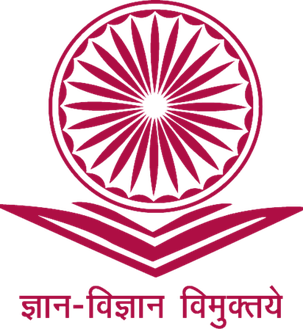INTERNATIONAL JOURNAL OF CREATIVE RESEARCH THOUGHTS - IJCRT (IJCRT.ORG)
International Peer Reviewed & Refereed Journals, Open Access Journal
IJCRT Peer-Reviewed (Refereed) Journal as Per New UGC Rules.
ISSN Approved Journal No: 2320-2882 | Impact factor: 7.97 | ESTD Year: 2013
Call For Paper - Volume 13 | Issue 11 | Month- November 2025
Scholarly open access journals, Peer-reviewed, and Refereed Journals, Impact factor 7.97 (Calculate by google scholar and Semantic Scholar | AI-Powered Research Tool) , Multidisciplinary, Monthly, Indexing in all major database & Metadata, Citation Generator, Digital Object Identifier(CrossRef DOI)
Contact Us Click Here
WhatsApp Contact Click Here
Published Paper Details:
Paper Title
"A Study To Assess The Effectiveness Of Structured Teaching Programme On The Knowledge Among Postmenopausal Women Regarding Postmenopausal Symptoms And Their Management In Selected Village Saunti Of District Fatehgarh Sahib"
Authors
Ms.Ravideep Kaur, Ms. Priya Choudhary, Ashish Bagal, Ghayoor Khan
Keywords
postmenopausal symptoms, knowledge, structured teaching program, women's health, symptom management.
Abstract
ABSTRACT
This study assesses the effectiveness of a structured teaching program in improving
knowledge about postmenopausal symptoms and their management among women.
Postmenopausal symptoms can significantly impact a woman's quality of life, yet
awareness and understanding of these symptoms and effective management strategies
are often limited. A quasi-experimental design was used, involving [sample size, e.g.,
50] postmenopausal women from [location] who were selected through [sampling
method, e.g., convenience sampling]. A pre-test assessed participants' baseline
knowledge, followed by a structured teaching program over [duration, e.g., two
weeks]. Post-intervention knowledge was then measured using a standardized
questionnaire, and pre-test and post-test scores were statistically analyzed to evaluate
the program's effectiveness.
The results revealed a significant increase in knowledge about postmenopausal
symptoms and their management following the intervention, indicating the structured
teaching program's positive impact. This study suggests that structured education
programs can effectively raise awareness and enhance understanding of
postmenopausal health, equipping women with information to manage their symptoms
better and improve their overall well-being. Further research could expand on these
findings across diverse populations and longer timeframes to validate and generalize
the effectiveness of such programs.
INTRODUCTION
When a woman permanently stops having menstrual periods, she has reached the stage of life called menopause. Often called the change of life, this stage signals the end of a woman's ability to have children. Many healthcare providers actually use the term menopause to refer to the period of time when a woman's hormone levels start to change. Menopause is said to be complete when menstrual periods have ceased for one continuous year.
The transition phase before menopause is often referred to as perimenopause. During this transition time before menopause, the supply of mature eggs in a woman's ovaries diminishes and ovulation becomes irregular. At the same time, the production of estrogen and progesterone decreases. It is the big drop in estrogen levels that causes most of the symptoms of menopause.
OBJECTIVES:
1. To assess the effectiveness of a structured teaching program on enhancing
women's knowledge of postmenopausal symptoms and their management.
2. To implement a structured teaching program focusing on postmenopausal
symptoms and management strategies.
3. To evaluate the change in knowledge on postmenopausal symptoms and
their management among women following the structured teaching program.
4. To compare pre- and post-intervention knowledge levels to determine the
effectiveness of the structured teaching program.
5. To identify factors influencing the knowledge acquisition regarding postmenopausal symptoms and management among participants (e.g., age,
educational background, prior health knowledge).
METHODOLOGY
The present study was conducted to evaluate the A study to assess the effectiveness of structured teaching programme on knowledge of postmenopausal symptoms and its management among women of village saunti district fatehgarh sahib .The population in the present study include 400 postmenopausal women at selected village. the sample were drawn by Purposive Sampling Technique. The data was collected by a structured demographic sheet and self-structured questionnaire.
Findings of the Study: Major Findings are:
? With regards to age, mostly 65 (32.5%) were in the age group of 49 -52 years in experimental group and similarly most of them 65 (32.5%) were in the age group of 49 - 52 years in control group also. More or less similar percentages (31% and 30.5% and 17% and 18%) of them were in the age group of 53-56 and
57- 60 years in experimental group and control group.
? 73 (36.5%) were belong to socioeconomic status of Rs. 2001 - Rs.3001 in
experimental group and more or less similar findings 76 (38%) were belong to socioeconomic status of Rs. 2001 - Rs.3001. Higher percentages of (30%and
29.5%) were in the socioeconomic status of Rs. 3001 - Rs.4001 in both the groups.
? With regards to education, majority 83 (41.5%) had primary education in experimental group and 63(31.5%) had no formal education in control group.
More or less similar percentages (26.5% and 28.5%) of them had secondary education in experimental group and control group. Only 4.5% and 5% of them
were graduates in both groups.
? With regard to occupation, majority 114 (57%) and 99 (49.5%) were housewives in both the groups. 21% and 26% were sedentary workers in both
the groups. Only 5% and 5.5% of them were heavy workers in both groups.
? In the current study, more or less similar 105 (52.5%) and 107 (53.5%) were attained menarche at the age of 13 years in both the groups. 17.5% and 14.5% of
them attended the menarche at the age of below 12 years. Only 5% and 2.5% of
them attended the menarche at the age of 14 years above.
? In the study findings, 106 (53%) and 86 (43%) were hindus in both the groups.
? Based on their dietary pattern, majority 178 (89%) and 178 (89%) of them had mixed diets.
? With regards to personal habits, 145 (72.5%) and 164 (82%) of them had no bad habits. 14.5% and 12% had the habit of tobacco chewing. Only 13% and 6 %
had the habit of betal nut chewing.
? As discussion of findings related to period of cessation of menstruation depicts
that majority (47.5% and 46.5%) of menopausal women had cessation of menstruation between 1-2 years in both groups. Similar percentage (30.5% and
29% and 20% and 22%) had cessation of menstruation below 1 year
? With regards to type of family, 94 (47%) and 99 (49.5%) were in nuclear family. 43% and 38.5% of menopausal women were living as a joint family
? About 169 (84.5%) and 165 (82.5%) of them were not used any home remedies for menopausal symptoms in both the experimental group and control group.
LIMITATIONS
o It was difficult for the investigator to arrange common venue for group yoga practice for Weekly session class
o It was time consuming to explain the menopausal women about video yoga therapy demonstration and assessment of menopausal symptoms because of
difference in their level of understanding.
? The investigator had constraints in reaching the menopausal women in the evening time during the study period although it was tackled with the help of
VHN and Mazhalir Kuzhulu (Local Worker)
o Most Menopausal women felt that, teaching yoga at their door step would be convenient.
o Data collection time was re-altered by the investigator as per the feasibility of the sample.
o Satisfaction of subject would have been difficult to measure.
CONCLUSION
From the findings it concluded that,
In present study the researcher has identified that the Knowledge on menopausal symptoms can be improved by STP (Structured Teaching Programme)
and level of menopausal symptoms can be reduced by Yoga therapy, thereby the
quality of life among menopausal women was improved and their stress level was
significantly reduced. The identified results are highly generalisable because of the
increased sample size and presence of control group.
REFERENCE
? Abdullah. B & Moize Ismail. B.A (2016) ?Prevalence of menopausal symptoms, its effect on quality of life among Malaysian women and their treatment seeking
behavior': Medical Journal of Malaysia: Vol 72, No 2, pp 94 - 99?
? Abedzadeh Kalarhoudi M, Taebi M, and Saberi F( 2011). ?Assessment of?
Quality of Life in Menopausal Periods: A Population Study in Kashan, Iran': Iran Red Crescent Med Journal, 13(11): 811-817.
? Abolill. M.Z (2015) ?Prevalence of Menopausal related symptoms and their impact on Quality of life among Egyptian women': Journal of Clinical experience of obstetrics and gynaecology, vol XLII, n (2), pp 983 - 988?
? ACC Ikeme, T C Okeke & SPO Akogu (2011) ? Knowledge and Perception of Menopause and Climacteric Symptoms among a Population of Women in Enugu,
South East, Nigeria' : Annals of Medical & Health Science Research .vol; 1(1):pp 31-36.?
? Al Dughaither. A, AlMutairy.H, AlAteeq. M (2015) ?Menopausal symptoms and quality of life among Saudi women visiting primary care clinics in Riyadh,
Saudi Arabia': International Journal of Women's Health, Volume:7 Pages 645-- 653?
? Baig L, et al., (2009) ?Association of menopause with osteopenia and osteoporosis: results from population based study done in Karachi' , Journal of
Collaborative Physicians Surg Pak, 19 (4),pp 240 -244?
? Bairy L, Adiga S, Bhat P et al (2009) ?Prevalence of menopausal symptoms and quality of life after menopause in women from South India' Aust N Z J Obstet Gynaecol.;49(1):106-109.?
? Bakouei et al. (2013) ?Assessment of women's awareness level about symptoms
and complications of menopause', Journal of Local and Global Health Science:
pp 1 - 6?
? Bansal P, Chaudhary A, Soni RK, et.al (2013) ?Menopausal problems among rural middle aged women of Punjab', International Journal of Research Health
Science; vol 1: pp 103-109?
? Batool Mazhar. S & Rasheed. S (2009) ?Menopause Rating Scale (MRS): A
Simple Tool for Assessment of Climacteric Symptoms in Pakistani Women',
Annual Pakistan Institute of Medical Science; 5(3): pp 158-161?
? Beigi M et al.,(2012) ? A comparative study on sexual dysfunction before and
after menopause,' Iran Journal of Nurses Midwifery Research, ( 2 suppl 1): S 72?
-75
? Bhattacharya P.K Enu Boro (2016) ?Effectiveness of Self Instructional Module
on Coping Strategies of Tri-Dimensional Problems of Premenopausal Women -
A Community Based Study', Journal of Clinical Diagnostic Research. Vol
10(11): pp 15-18.?
? Caldwell S., Gass, M.L., Kolsky, K., Low Dog. et.al (2012) ?Menopausal
symptoms and complementary health practices', Retrieved from
http://nccam.nih.gov/health/menopause/menopausesymptoms?
? Cathryn Booth-LaForcea, Rebecca C ( 2007) ?A pilot study of a Hatha yoga treatment for menopausal symptoms', Maturitas, vol 57 (3): 286-295?
IJCRT's Publication Details
Unique Identification Number - IJCRT2504195
Paper ID - 281087
Page Number(s) - b611-b614
Pubished in - Volume 13 | Issue 4 | April 2025
DOI (Digital Object Identifier) -
Publisher Name - IJCRT | www.ijcrt.org | ISSN : 2320-2882
E-ISSN Number - 2320-2882
Cite this article
Ms.Ravideep Kaur, Ms. Priya Choudhary, Ashish Bagal, Ghayoor Khan, ""A Study To Assess The Effectiveness Of Structured Teaching Programme On The Knowledge Among Postmenopausal Women Regarding Postmenopausal Symptoms And Their Management In Selected Village Saunti Of District Fatehgarh Sahib"", International Journal of Creative Research Thoughts (IJCRT), ISSN:2320-2882, Volume.13, Issue 4, pp.b611-b614, April 2025, Available at :http://www.ijcrt.org/papers/IJCRT2504195.pdf
Article Preview
Indexing Partners
Call For Paper November 2025
Call For Papers
November 2025
Volume 13 | Issue 11
Last Date :
30-Nov-2025
Submit Manuscript Online Impact Factor: 7.97 Review Results : Within 02-03 Days Paper Publication : Within 02-03 Days
November 2025
Volume 13 | Issue 11
Last Date :
30-Nov-2025
Submit Manuscript Online Impact Factor: 7.97 Review Results : Within 02-03 Days Paper Publication : Within 02-03 Days
Published Issue Details
For Authors
Forms / Downloads
Other IMP Links
Indexing Partner
Research Area
LICENSE
ISSN and 7.97 Impact Factor Details

ISSN: 2320-2882 Impact Factor: 7.97 and ISSN APPROVED Journal Starting Year (ESTD) : 2013
ISSN and 7.97 Impact Factor Details

ISSN: 2320-2882 Impact Factor: 7.97 and ISSN APPROVED Journal Starting Year (ESTD) : 2013
DOI Details
CONFERENCE
CONFERENCE MANAGMENT & PUBLICATION CONFERENCE PROPOSAL
RECENT CONFERENCE

CONFERENCE PROPOSAL CONFERENCE PROCEEDINGS

CONFERENCE PROPOSAL CONFERENCE PROCEEDINGS
For Reviewer /Referral (RMS) Earn 500 per paper
Important Links
NEWS & Conference
Digital Library
IJCRT RMS | Earn 500 Per Paper.
LICENSE
Indexing Partner






































































